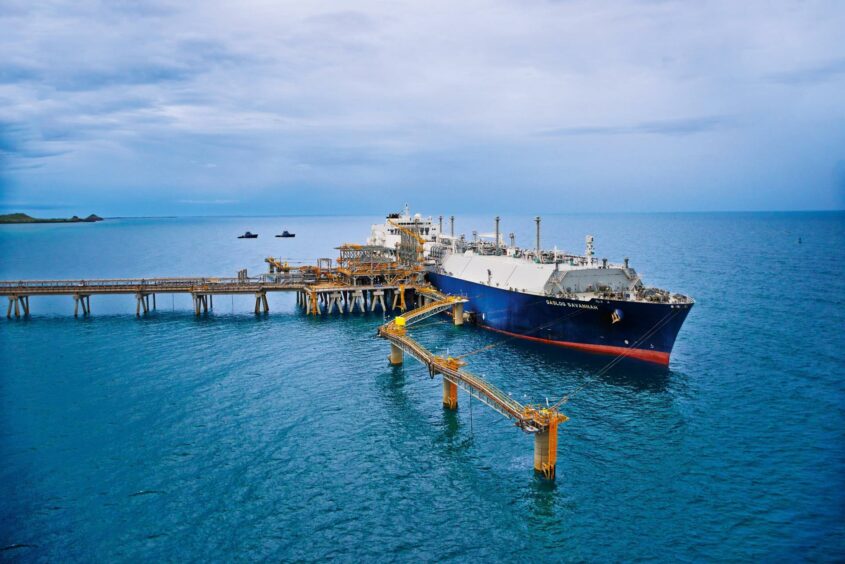
Opportunities abound for mergers and acquisitions across energy-hungry Asia Pacific nations, as majors, such as Chevron, Shell, and ExxonMobil, seek to exit or rationalise their upstream portfolios.
Meanwhile, rising interest in the energy transition also provides numerous opportunities in the renewable energy and liquefied natural gas (LNG) markets.
Upstream gas and renewables are among the most sought-after assets now, Sanjeev Gupta, Asia-Pacific oil and gas leader at Ernst & Young, told Energy Voice.
The liquified natural gas (LNG) sector is seeing strong interest, with trade desks being set up in Singapore, as demand for the fuel in energy-short Asia looks set to surge. Investments for LNG liquefaction and regasification plants are being channeled into various markets, including the Philippines, Indonesia, Myanmar, and Cambodia, said Gupta. Further, renewable energy projects – including solar, wind farms, and hydrogen, as well as associated developments such as carbon credit schemes and carbon capture, utilisation, and storage (CCUS) – are also attracting strong interest in Australia and Indonesia, he added.
Shell has been busy buying renewable energy companies in Australia, a trend that is expected to continue, said Graeme Bethune, chief executive of Australian-based energy advisory firm Energy Quest.
But perhaps one of the biggest deals on the horizon will be a sell down of Santos’ share of Papua New Guinea LNG (PNG LNG). Following Santos’ acquisition of Oil Search last year, the Australian company’s interest in the PNG LNG export project rose to a 42.5% share, more than operator ExxonMobil. As a result, Santos is seeking to sell down some of its PNG exposure.
A potential sell down of 10% by Santos to TotalEnergies would bring the operator of Papua LNG into the PNG LNG project and create a better alignment of partners across the co-located projects, Bethune told Energy Voice.
In a note on 8 February, Morgan Stanley valued Santos’s stake in PNG LNG at $14 billion or $330 million per percentage point. This would put a $3.3 billion price tag on a 10% share of the project.
The PNG government also revealed on 17 February that Santos has offered additional equity to the government as part of any sell down to increase the government’s equity in PNG LNG from 19.6% to 22.5%, said Bethune.
Andrew Harwood, Asia Pacific research director at Wood Mackenzie, told Energy Voice that “longer-term merger and acquisition (M&A) trends continue to be the majors and large international oil companies (IOC) divesting assets to optimise upstream portfolios, reduce their emissions footprint and prioritise capital for new energy and low carbon opportunities.”
The majors, such as ExxonMobil, Chevron, and Shell, still hold positions that remain non-core to their global portfolios in various Southeast Asian countries. Woodside also expects to exit non-core positions from its enlarged portfolio following the merger with BHP’s petroleum business, added Harwood.
Other players such as Pertamina in Indonesia, or Australia’s Carnarvon – which holds a stake in the large Dorado oil project – will be seeking to partially divest interests to generate funding and reduce capital exposure, said Harwood.
Harwood expects smaller, regional, and national players to continue as the main buyers of assets, as they seek to take advantage of expanding oil and gas demand over at least the next decade. Higher prices could also entice new private equity players, but with a strategy that prioritises cash flow and shareholder distributions over an eventual public listing.
Brian Chia, a Kuala Lumpur-based partner at Wong & Partners, member firm of Baker McKenzie International, told Energy Voice that aside from cashed up corporates and strategic buyers, private equity will be one of the main drivers of M&A deal activity.
“The bidder universe has changed – national oil companies (NOCs), private enterprises, often backed by private equity, will be potential buyers. There will also be opportunities for long term private capital, for example, private equity funds, pension funds, insurers, family offices,” added Chia, who is also the head of M&A in APAC for Baker McKenzie.
Still, uncertainty around the pace of the energy transition and regulations around decarbonisation is putting downward pressure on deal valuations. “Deal activity in recent years has been focused almost solely on flowing production. But current prices and concerns over the medium-term supply outlook could encourage the bold to invest in pre-development assets, particularly those that can harness nearby infrastructure and be turned around in a short timeframe,” said Harwood.
Crucially, in the wake of the Ukraine-Russia conflict, there could be some significant changes in the approach from Chinese and Japanese investors. “China’s NOCs might look to deepen ties with Russian operators, or indeed target overseas interests held by Russian operators. On the other hand, Japanese E&Ps could look to expand their operations in the Middle East, Asia, and Australia, to diversify their reliance on Russian exports,” added Harwood.
Chia also expects Chinese investment to help drive the energy transition in Southeast Asia, where their money will be welcomed. “Southeast Asia is known, safe and predictable, there is a familiarity, especially with the vast Chinese diaspora. There is strategic value and significance in China’s backyard. The Chinese have cultivated friendships with Malaysia, Philippines, Singapore, and Myanmar,” said Chia.
“Protectionism is affecting where Chinese investments go and China will favour jurisdictions which provide higher levels of deal certainty, such as Southeast Asia, Latin America and Africa,” added Chia.